Camphor tree
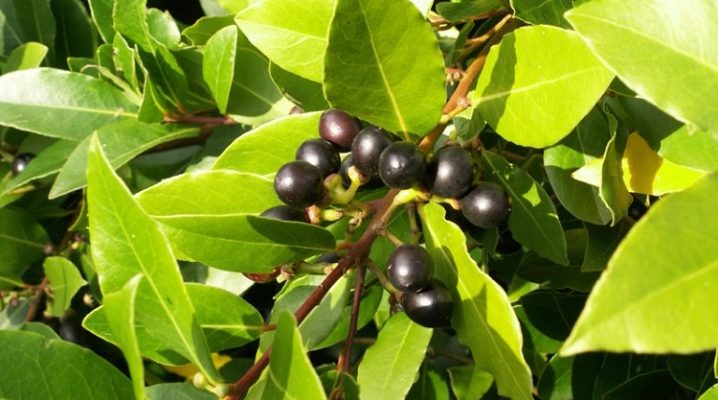
What is camphor oil hardly needs to be explained to anyone. It has a peculiar specific smell, and the wood of the camphor tree is used to make that very camphor. This plant will be discussed in the article.
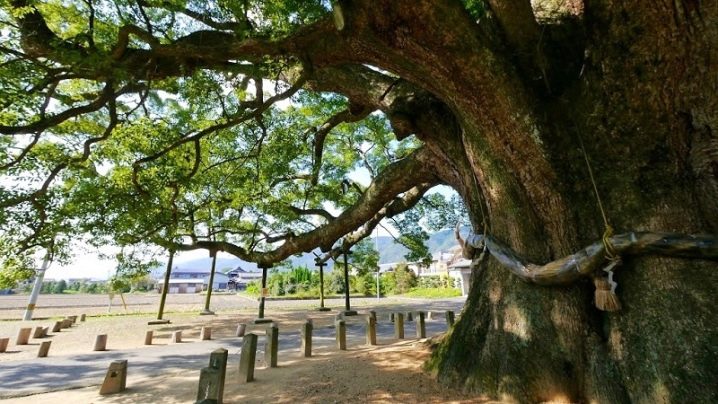
Description
Camphor laurel (cinnamon), or camphor tree, grows naturally in hot countries. It can be found in China, Africa, Taiwan, Japan, Madagascar and the Arabian Peninsula. And also trees grow on the Black Sea coast. Laurel is considered an evergreen tree that can grow up to 50 meters high. It has a spreading tent-shaped crown, a solid gray trunk, which reaches 5 meters in girth. Belongs to the laurel family. The leaf plates are glossy, ovoid with pointed ends. On the surface there is often a kind of fluff, and the area of the leaves is dotted with drops - this is oil.
Flower buds appear at the base of the petioles of leaf plates in season. The plant blooms with small flowers up to 4 millimeters, which are collected in paniculate inflorescences of yellow shades. Flowering is abundant and long, from early May to early August, and at the end of November, drupes are formed - fruits with fragrant pulp. On average, a plant is capable of bearing more than 30 kilograms of fruit annually.
The average life cycle of a tree is about 100 years. It grows very quickly, aggressively filling the surrounding areas. The most common varieties:
- camphor tree;
- noble laurel;
- canary laurel tree.
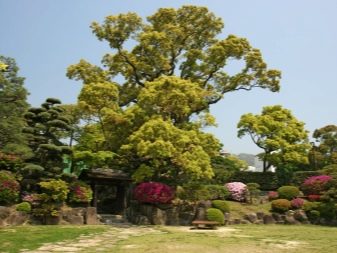
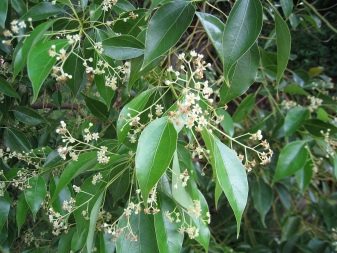
How to plant?
It is recommended to grow a noble laurel at home. The best option would be to grow a southern variety tree. It is better to plan a landing at the end of winter in a substrate purchased in a store. Some growers independently prepare the soil as follows: thoroughly mix peat with sand and black soil in proportions 1: 1: 3. Before determining the seed to a depth of 2 centimeters, drainage from broken brick, pebbles or expanded clay must be sent to the bottom. It is better to disinfect the soil composition in the oven for an hour at temperatures up to 120 degrees.
After planting, water the seed in the pot well and cover with a bag. Leave the container warm at 23 degrees. Shoots can be observed in 3.5-4 months. To speed up the germination of seeds, experts recommend soaking the seed in a solution of potassium permanganate for about a day. After planting, the film should be opened a couple of times a week, and it is better to water the dry ground. After germination, the film must be removed, and the container with herbs must be placed in a warm and bright room without drafts.

Care
If in winter the tree should be on the sunny side, then in summer it is convenient to take it out to the veranda, terrace or find a quiet place for it on the porch, flowerbed. Make sure that the plant is not too hot and the soil does not dry out in the pot, otherwise the crop will shed all the foliage. The camphor tree requires systematic spraying and watering. An approximate watering scheme is once every 3 days in summer, and in winter - once a week. It is best to use mineral fertilizers as top dressing. They need to be brought in once every 3 months. During watering, you can also add baking soda in the following way: 7 teaspoons per liter of warm water.
Laurel is pruned for aesthetic purposes, but infrequently, he tolerates such a procedure with ease. Usually, no more than 20 centimeters are cut, but care must be taken to ensure that a sufficient number of healthy buds remain on the bushes.It is recommended to transplant an exotic plant once every 2-3 years, as the pot fills with the root system. The soil should be chosen with a neutral acidity level. The cinnamon is transplanted by transferring it into a container with a larger diameter. The tree is easily propagated in various ways: by seeds, cuttings, division.
In the summer, cuttings up to 9 centimeters long are harvested, which have several healthy internodes. After that, the prepared material is sent to a moistened turf to a depth of 1 centimeter, powdered with sand, moistened with a spray bottle.
After 1.5-2 months, the rooted branches are planted in a permanent pot. Cuttings are looked after as carefully as a young tree.
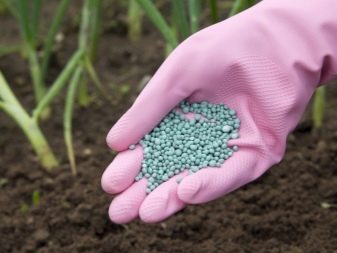

With the onset of autumn, the tree prepares for rest. Southern culture needs to reduce the temperature regime to 13 degrees, move the container to a dark place, water less often. A mature tree can withstand short-term cold temperatures down to -10 degrees. But in the open field, the camphor tree can be grown only in the area where the temperature is always above zero. Sometimes a rather large plant is transplanted into spacious tubs, and in winter it is placed in a greenhouse, a place in a winter garden is determined, or brought into a house.
Due to its specific aroma, insects are not very fond of cinnamon, and diseases are bypassed by it if the plant is properly looked after. Still, some problems can arise. For example, scale insects and spider mites love the camphor tree. It is they who are able to take all the juices from the plant. You can get rid of them by applying store-bought insecticides. Sometimes black stains appear on the surface of the leaf plates - a sooty fungus. It is easy to get rid of by spraying fungicides or properly diluted Bordeaux liquid. If the tree begins to shed its leaf mass, then reconsider the conditions of detention. Perhaps the plant is receiving a lot of light, but little water, or no spraying. With the normalization of the care process, the tree is able to recover.
An approximate schedule for caring for a home plant:
- March - sowing seeds, planting cuttings and layering, feeding;
- in the summer months, constant feeding is carried out, at the end of the warm season, pruning is done;
- October, November - harvesting of fruits and leaves, fertilization is almost never practiced;
- December, January - the plant is resting, sometimes seeds are sown at the end of February.
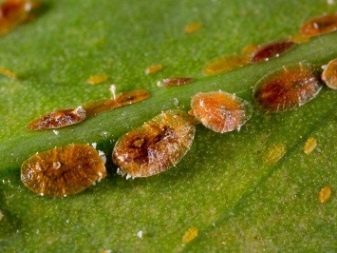

Application
Of course, this is a beautiful plant for interior decoration. It is grown not only at home. In hot countries, whole alleys and park paths are planted with trees, but cinnamon has many useful properties. Here are just a few of them:
- antidepressant;
- antispasmodic;
- insecticide;
- laxative;
- antihelminthic;
- antipyretic;
- diuretic;
- perfectly enhances immunity;
- cardiotonic;
- wound healing;
- antiseptic;
- analgesic effect.


Here are some interesting facts about the camphor tree.
- Even in its natural environment, the tree grows rapidly only in fertile soil.
- Determining that there is a camphor tree in front of you is quite simple: pick a small leaf, crush or rub it in your fingers. If a specific smell appears, then you have cinnamon in front of you.
- All parts of the plant are curative. For example, an analgesic decoction is made from young leaves, tea is prepared from the roots, wood is used to extract oil, and fresh leaf plates are an excellent antiseptic. If you make jam from herbs, then you can get rid of warts, herpes and hemorrhoids for a long time.
- The plant has a lot of berries, they are eaten only by birds. If there are no plans to grow tree plantations, then it is better to immediately get rid of such debris.
The camphor tree is a wonderful plant with many medicinal properties. In nature, it reaches gigantic proportions, and its smaller copy can be successfully cultivated at home in any natural zone.
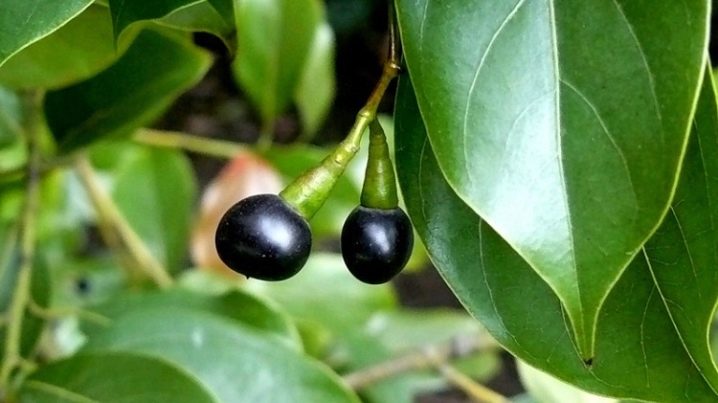



































































The comment was sent successfully.